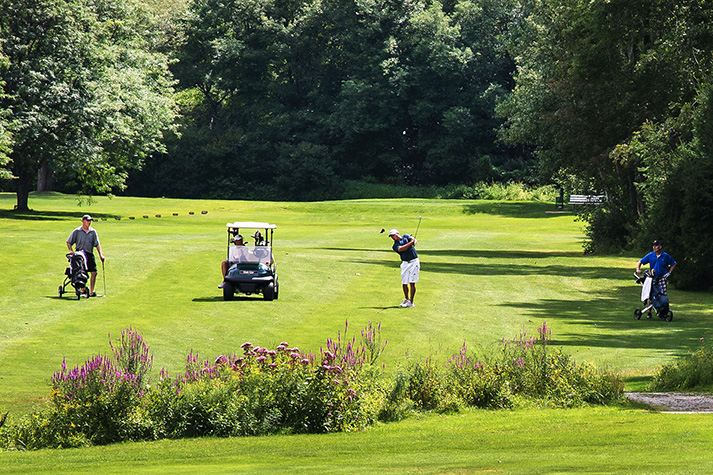Making Time For Pace Of Play
- Details
- Category: From The Fringe
- Published: 2017-10-08

image courtesy http://www.hanscom.af.mil/
By Ian Fabian
I don’t know about you, but I can’t seem to watch a golf television broadcast or read an article pertaining to golf these days without the “Pace of Play” topic being brought up.
The topic has been directly linked to the subject of “Growing the Game” which is in itself another buzz phrase of the day. One of the main problems, in my estimation, is that absolutely no one believes they’re a slow player and therefore the pace of play has nothing to do with them.
There are also those who appear to simply not care about anyone else on the golf course, believing they’ve paid their money and thus have the right to take as much time as they please, regardless of who else it might affect.
Here are a few observations I’ve made on the subject:
- I’ve witnessed a 27-handicap check his GPS watch and then “scope” the flag for an approximately 60-yard shot and then promptly hit the ball 25 yards past the green. Let’s try and understand that as amateurs our ability to hit the ball to a specific yardage is suspect at best so if your watch says 63 yards and your scope says 65 yards, just hit the ball.
- I’ve watched players who I’ve played with walk a complete circle around every hole to determine the break on a putt on a course they’ve played hundreds of times over the past decade somehow thinking that the green has mysteriously changed.
- I can’t begin to tell you how many times we’ve all agreed to play “ready golf” on the first tee only to have someone explain two holes later that they haven’t hit their shot yet because so and so was away.
- Instead of walking part way up the fairway and chatting (golf, after all, is a social game) and then heading towards their own ball, I’ve watched players all head to one ball together then the next and so on.
- Marking a putt that is 6 inches, whether in a tournament or not, is simply ridiculous and yet we’ve all seen it done. Even the pros “tap in” and they’re playing for considerably more than most of us are.
- You are currently allowed 5 minutes to search for a ball that may be lost. I have personally watched players searching for a ball that could have been timed with a sundial. Fortunately the folks responsible for making the rules have changed that to 3 minutes maximum in the coming year, however, it remains to be seen whether or not this change will filter down to the psyche of the average golfer.
Some of the latest thinking to grow the game and eliminate the extensive amount of time it can take to play is the idea of playing 9 holes rather than 18. While I would never discourage anyone from coming up with new ideas, this seems to me to be one that breaks with the tradition of a very traditional game.
Would we change the Indianapolis 500 to the Indianapolis 250 in order to lessen the number of accidents that take place now? Or change the number of innings played in a baseball game to 5 from 9 in case the players or the fans have other things they might want to be doing?
My point here is that the game can be played in a reasonable amount of time and any true golfer would always want to play a full 18 holes if it could be done within that reasonable amount of time. Changing the number of holes played won’t change the habits of the slow players it will just make playing 9 holes longer than it should be and what do we do then, start playing 6 holes?
If you have things you want to do after playing golf, play early in the morning and allot the amount of time that it normally takes you to play as your “golf time“. If you prefer to sleep in, book a later time and prepare yourself that the round will take longer to play as there will likely be slow players in front of you.
Either way, it’s your “golf time” not your time to be stressed out over how long you’re out on the course. Enjoy the moment.
About the Writer:
Ian Fabian is a self-proclaimed golf addict and makes no apologies for it. He can be found most weekends carving out his legacy on his home golf course and is easily recognized by the cloud of swing thought bubbles following him around like the cloud of dust followed Pig Pen from Charles Schultz' famous Peanuts comic strip.



